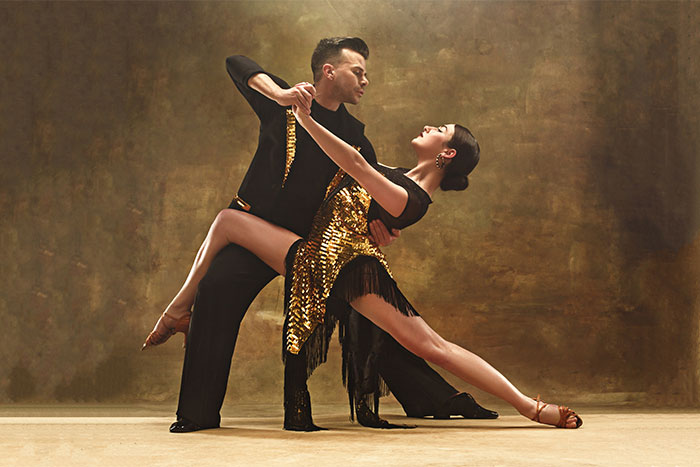The Rumba
The modern international style of dancing the rumba derives from studies made by dance teacher Monsieur Pierre who partnered Doris Lavelle. Pierre, then from London, visited Cuba in 1947, 1951 and 1953 to find out how and what Cubans were dancing at the time.The international ballroom rumba is a slower dance of about 120 beats per minute which corresponds, both in music and in dance to what the Cubans of an older generation called thebolero-son. It is easy to see why, for ease of reference and for marketing, rumba is a better name, however inaccurate; it is the same kind of reason that led later on to the use of salsa as an overall term for popular music of Cuban origin.All social dances in Cuba involve a hip-sway over the standing leg and, though this is scarcely noticeable in fast salsa, it is more pronounced in the slow ballroom rumba. In general, steps are kept compact and the dance is danced generally without any rise and fall. This style is authentic, as is the use of free arms in various figures. The basic figures derive from dance moves observed in Havana in the pre-revolutionary period, and have developed their own life since then. Competition figures are often complex, and this is where competition dance separates from social dance. Details can be obtained from the syllabi of dance teaching organizations and from standard texts.
